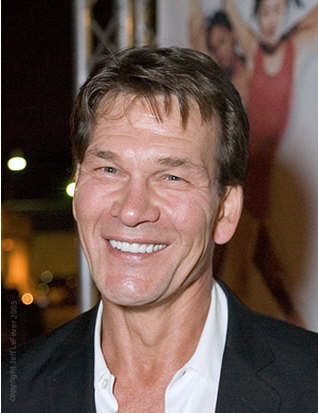2009 in Review: Our 10 Most Important Stories

Actor Patrick Swayze’s very public battle with stage IV pancreatic cancer raised public awareness of this disease. Three other public figures died from cancer of the pancreas this past year: “Dream Team” coach Chuck Daly, CBS News executive Don Hewitt and journalist and presidential speechwriter William Saffire. Supreme Court Justice Ruth Bader Ginsburg was also diagnosed with pancreatic cancer but her tumor was caught early (stage I) and she was successfully treated with surgery. We wrote about the genetics and treatment of pancreatic cancer.
It was widely reported that Apple CEO Steve Jobs suffers from “pancreatic cancer” but this was, unfortunately, an example of inaccurate and misleading reporting. Mr. Jobs did not have cancer of the exocrine pancreas but rather a neuroendocrine cell tumor that arises in the endocrine cells of the pancreas. Why does this distinction matter? It matters a lot because these are distinct diseases that are treated differently and have much different prospects for long-term survival. For example, pancreatic cancer would never be treated by a liver transplant.
Both Steve Jobs and singer Natalie Cole had organ transplants in 2009. Mr. Jobs had a liver transplant at a Memphis hospital and received a liver because he was the sickest person on the waiting list. Ms. Cole needed a kidney transplant because her kidneys were failing as a result of a chronic hepatitis C infection. Did you know that they don’t take your old kidneys out when they transplant another one in? The new kidney is placed in the front of the lower abdomen.
Tragically, actress Natasha Richardson became an organ donor following a skiing accident when apparently minor trauma caused a blood vessel to break inside her head. Her family donated her organs to help others. Following his liver transplant, Steve Jobs publicly urged everyone to become an organ donor saying, “I wouldn’t be here without such generosity.”




Farrah Fawcett’s sad struggle with anal cancer highlighted a number of important issues about health care in American society including access to care, so-called “medical tourism” and how the U.S. government prioritizes research funding for different diseases.
Actress Christina Applegate’s courageous, personal stories about her breast cancer, family history of breast and ovarian cancer and her mastectomies and breast reconstruction were inspiring. Two other important stories about breast cancer include the launching of the Love/Avon Army of Women, mobilizing patients to participate in clinical research, and the publication of the controversial new guidelines for mammography. On this topic, some celebrity comments produced more heat than light.
David Carradine’s accidental death from asphyxiation taught us a lot about real-world crime scene investigation and the definitions of terms manner of death (accidental) and cause of death (asphyxiation). Sadly, this knowledge of CSI and forensic medicine was useful again and again during the course of the year during the investigations of many other celebrity deaths including of course, the King of Pop, Michael Jackson. Mr. Jackson’s manner of death was homicide caused by acute propofol intoxication. Jackson’s case also highlighted issues of the practice of medicine, medical ethics, FDA-approved uses of drugs and the deadly consequences of “polypharmacy” and prescription drug abuse that has characterized a number of celebrity deaths in recent years.


Senator Ted Kennedy passed away 14 months after his diagnosis of brain cancer. Journalist Robert Novak also died from brain cancer 13 months after his diagnosis. Unfortunately, these survival times are average for this tumor despite the fact that the U.S. Government spends $200 million per year on brain cancer research.
The H1N1 (swine) flu pandemic is another illustration that “disease does not respect fame or fortune” as a number of public figures in entertainment, sports, government and politics and the media contracted this viral infection. As a public service, our companion site Resounding Health published free e-books on H1N1 influenza prevention, diagnosis and treatment.
To end on some lighter notes, check out our story on Dancing with the Stars while Dodging the Flu. We compare the precautions and remedies employed by TV personalities with the official recommendations of government public health agencies such as the U.S. Centers for Disease Control and World Health Organization. Speaking of dancing, if you haven’t already seen it, have a look at Hong Kong Dance Dog (Laughter is the Best Medicine).
Generational Passings
Died Too Young
| Vic Chestnutt, 45 | Danny Gans, 52 | Stephen Gately, 33 |
| “DJ AM” Adam Goldstein, 36 | Jade Goody, 27 | Andy Hallett, 33 |
| Billy Mays, 50 | Brittany Murphy, 32 | Steve McNair, 36 |
| Jett Travolta, 16 | Lucy Vodden, 46 | “Roc Raida” Anthony Williams, 37 |
























0 comments